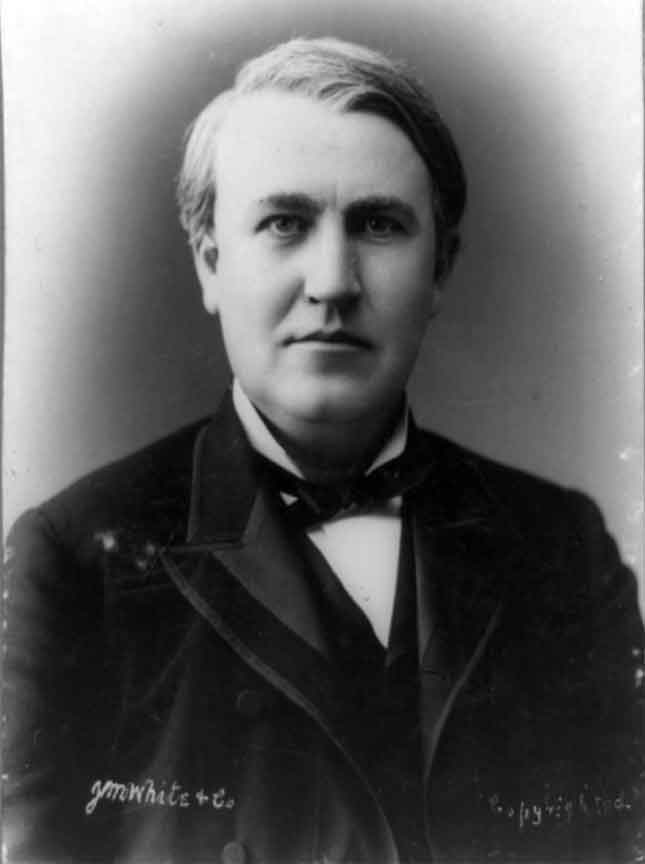Thomas Edison

Thomas Alva Edison was born in Milan, Ohio, on February 11, 1847. He received almost no formal education, and began working in various capacities on the railroad. Although he was hearing impaired, he was able to become a telegraph operator. He learned how to experiment with chemicals and electric currents from reading a popular book on science, and set up a chemistry lab in the baggage car during his spare time. In 1869, he patented his first inventions, a vote recorder and a stock ticker. He moved to New York, and eventually manufactured stock tickers while he worked on further inventions.
In 1876, Edison established the first industrial research laboratory, in Menlo Park, New Jersey. It was at Menlo Park that he invented the phonograph (1877) and the carbon filament incandescent lamp (1879). In 1887, he moved his laboratory to a larger venue in West Orange, New Jersey. In the 1890s, because of the concentrated, systematic work Edison completed in his new lab, he developed the fluoroscope, a process for the separation of iron, the storage battery, the dictating machine, the mimeograph and the moving picture machine.
Edison began to focus his efforts on creating and promoting companies to market his inventions, including the Edison General Electric Company, which merged with the Thomson-Houston Company in 1891 to become the General Electric Company. After extensive litigation, however, he lost control of is companies to a group of businessmen led by J. P. Morgan. His holdings in General Electric reduced to 10%, Edison sold out in 1892.
During World War I, Edison served as president of the Naval Consulting Board. After the war, he worked with Henry Ford and Harvey Firestone to develop rubber from domestic plants, a project which came to fruition only after Edison’s death. Edison died on October 18, 1931, in West Orange, New Jersey.
 >
>